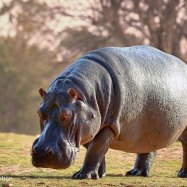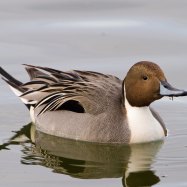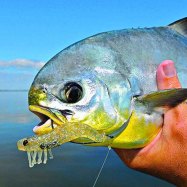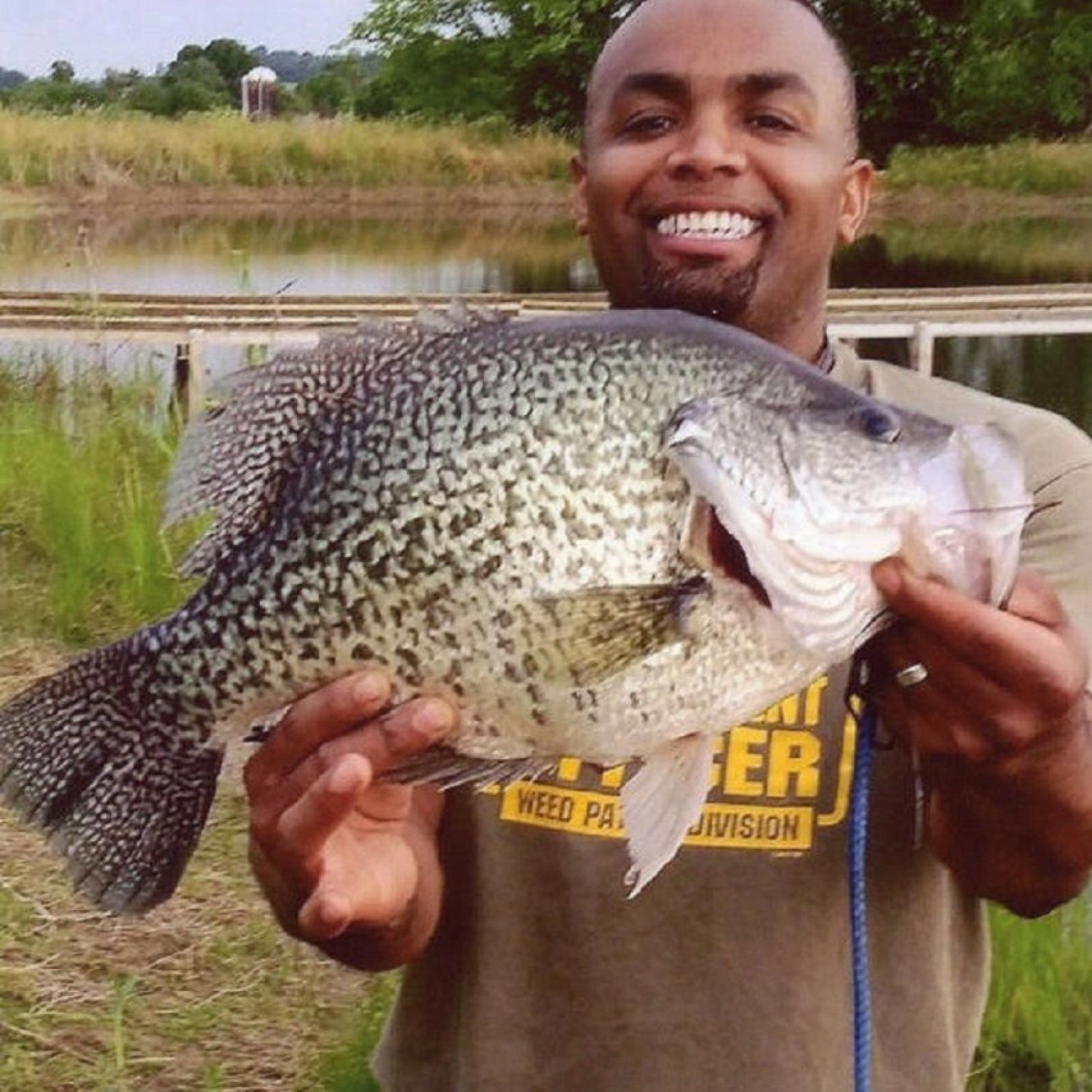
Black Crappie
25 to 38 cm
The Black Crappie, a popular game fish in the Eastern and Central United States, can grow up to 25 to 38 cm in length. Known for its deep and laterally compressed body shape, this member of the Centrarchidae family is a sight to behold. With its distinct black markings, it's no wonder this beautiful fish is highly sought after by anglers. Next time you're out fishing, keep an eye out for the stunning Black Crappie!
Animal Details Summary:
Common Name: Black Crappie
Kingdom: Animalia
Habitat: Freshwater lakes, ponds, rivers, and reservoirs
The Mysterious Black Crappie: A Marvel of Freshwater Habitats
The world is filled with countless creatures, big and small, that have captivated and amazed us with their unique features and behaviors. But among all these creatures, the black crappie stands out as one of the most interesting and mysterious freshwater fish. With its dark coloration, deep body shape, and carnivorous feeding behavior, the black crappie is a marvel of nature that deserves to be explored.A Scientific Look at the Black Crappie
The black crappie, also known by its scientific name Pomoxis nigromaculatus, is a freshwater fish that belongs to the Kingdom Animalia and the Phylum Chordata Black Crappie. Within the class Actinopterygii, it falls under the order Perciformes and the family Centrarchidae. This family of fish is commonly known as sunfish and includes other popular species like bluegill and largemouth bass.Black crappies are found in freshwater habitats like lakes, ponds, rivers, and reservoirs, mainly in North America. They are native to the United States, particularly in the eastern and central regions. However, due to their popularity as sportfish, they have been introduced to other regions such as Canada, Mexico, and even parts of Europe.
The Enigmatic Appearance of the Black Crappie
One look at the black crappie, and you are immediately drawn in by its enigmatic appearance. The dark olive-green to black coloration on its back, coupled with the silvery-white sides and belly, makes it stand out from other freshwater fish. It is this unique coloration that gives the black crappie its name.But it's not just the color that makes this fish intriguing Bull Shark. The black crappie's body shape is also something to admire. It is deep and laterally compressed, giving it a round and slightly flattened appearance. This shape is ideal for maneuvering through freshwater habitats, especially when chasing prey or avoiding predators.
On average, black crappies can reach a length of 25 to 38 cm, with the largest recorded size being 49 cm. These fish can weigh anywhere between 0.5 kg to 2 kg, with females typically being larger than males. This size makes them perfect for catching and eating, making them popular among anglers.
A Carnivorous Feeding Behavior
As mentioned earlier, the black crappie is a carnivorous fish, meaning it mainly feeds on other animals. Its diet consists of small fish, crustaceans, and insects that it can easily catch in its freshwater habitat. Due to their small size, black crappies have to feed on smaller prey, such as zooplankton, in their early stages of life until they grow large enough to tackle bigger prey.But what makes the black crappie unique is its feeding behavior. These fish are known to be opportunistic feeders, meaning they will eat whatever is available to them. They also have an interesting way of catching their prey. Black crappies have a row of backward-facing teeth at the roof of their mouth, which they use to trap and hold onto their prey.
A Versatile Habitat and Widespread Distribution
One of the most fascinating things about the black crappie is its ability to adapt to different freshwater habitats. These fish can thrive in lakes, ponds, rivers, and reservoirs, making them a common sight in various water bodies. This versatility allows them to spread to different regions, making them one of the most widespread freshwater fish in North America.The black crappie's geographical distribution extends from the eastern and central regions of the United States, all the way to Canada and Mexico. It has also been introduced to parts of Europe, including France, Italy, and even Bulgaria. With its resilience and adaptability, it's no wonder the black crappie has become a popular game fish in many regions.
A Favorite Among Anglers
Due to its widespread distribution and popularity as a sportfish, black crappies have become a favorite among anglers. These fish provide a fun and challenging fishing experience, as they are known to put up a good fight when caught on a line. Their small size also makes them a suitable target for beginner anglers and children, making them a common staple in families who love to fish.But black crappies are not only sought after for their game qualities. They are also highly prized for their delicious white meat, making them a popular food fish among fishing communities. Their mild flavor and flaky texture make them a versatile ingredient that can be cooked in a variety of ways, from frying and grilling to baking and broiling.
The Future of Black Crappies
Despite their popularity among anglers and as a food source, black crappies face some threats that could affect their future survival. Habitat destruction and pollution have led to a decline in their populations in some regions. Overfishing is also a concern, as black crappies tend to be caught in large numbers for recreational purposes.Fortunately, efforts are being made to conserve and manage black crappie populations. Regulations and restrictions have been put in place to protect these fish from overexploitation. Additionally, conservation efforts are focused on improving water quality and protecting their habitats, allowing these fish to thrive and maintain their vital role in freshwater ecosystems.
In Conclusion
The black crappie is a remarkable freshwater fish that has captured the hearts of anglers and nature enthusiasts alike. With its mysterious appearance, versatile habitat, and carnivorous feeding behavior, it's easy to see why this fish has become one of the most popular freshwater species in North America. But beyond its popularity, the black crappie also plays a crucial role in balancing freshwater ecosystems, making it a valuable and fascinating creature to learn about and admire.

Black Crappie
Animal Details Black Crappie - Scientific Name: Pomoxis nigromaculatus
- Category: Animals B
- Scientific Name: Pomoxis nigromaculatus
- Common Name: Black Crappie
- Kingdom: Animalia
- Phylum: Chordata
- Class: Actinopterygii
- Order: Perciformes
- Family: Centrarchidae
- Habitat: Freshwater lakes, ponds, rivers, and reservoirs
- Feeding Method: Carnivorous
- Geographical Distribution: North America
- Country of Origin: United States
- Location: Eastern and Central United States
- Animal Coloration: Dark olive-green to blackish on back, silvery-white on sides and belly
- Body Shape: Deep and laterally compressed
- Length: 25 to 38 cm

Black Crappie
- Adult Size: Up to 48 cm
- Average Lifespan: 4 to 7 years
- Reproduction: Sexual
- Reproductive Behavior: Spawning in spring
- Sound or Call: Produces faint sounds or drumming during spawning
- Migration Pattern: Migrate to shallow waters for spawning
- Social Groups: Solitary
- Behavior: Active during dawn and dusk
- Threats: Habitat loss, pollution, overfishing
- Conservation Status: Least Concern
- Impact on Ecosystem: Important prey species for larger predators
- Human Use: Recreational fishing
- Distinctive Features: Prominent dorsal fin, dark vertical bars on sides
- Interesting Facts: Can change color to match surroundings, popular game fish
- Predator: Larger fish, birds
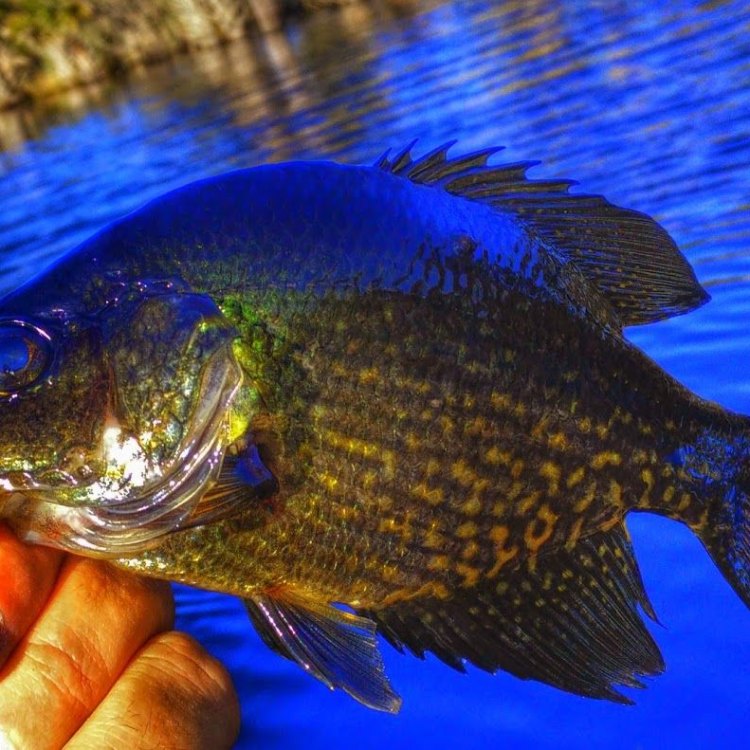
Pomoxis nigromaculatus
The Enigmatic Black Crappie: A Fish with Many Facets
When it comes to aquatic creatures, few stand out as much as the black crappie. This species of freshwater fish has captured the interest and awe of anglers and naturalists for centuries. With its distinctive features and unique behaviors, the black crappie is not just any typical fish. In this article, we will dive deep into the world of this enigmatic species and uncover the many hidden facets of the black crappie PeaceOfAnimals.Com.The Basics
Before we explore the fascinating aspects of the black crappie, let's start with the basics. As the name suggests, the black crappie is a member of the sunfish family, known for their sun-shaped body and large mouths. It can be found in ponds, lakes, and rivers throughout the United States and Canada, making it a popular game fish among anglers. They are also commonly found in parts of Europe and Asia, where they have been introduced.The black crappie is a relatively small fish, with the average adult size reaching up to 48 cm. Its average lifespan ranges from 4 to 7 years, with some individuals living up to 10 years in the wild. Interestingly, the black crappie is one of the few fish species that have a longer lifespan in captivity.
Reproduction and Behavior
Like most fish, the black crappie follows a sexual reproductive pattern. During breeding season, which usually occurs in the spring, male crappies will create nests in shallow waters by digging small depressions in the substrate Banana Eel. These nests serve as a safe place for female crappies to lay their eggs, as well as a site for male crappies to fertilize the eggs.One of the most distinctive behaviors of the black crappie during spawning is its faint sounds or drumming. This sound is produced by the male crappies as they vibrate their swim bladder to attract females and defend their territory. This unique feature not only adds to the charm of the black crappie but also helps researchers differentiate it from other species of sunfish.
While the black crappie is a solitary fish, it is most active during dawn and dusk. This is when they are most likely to feed, using their keen sense of sight and lateral line to detect prey. They have a wide range of preferred food, including insects, small fish, and even small crustaceans. This active behavior not only makes them a prime target for anglers but also plays a crucial role in the ecosystem.
Conservation and Threats
Despite its wide distribution, the black crappie population is facing some threats that have caused concern among conservationists. One of the biggest threats is habitat loss, as the development of human settlements and agriculture has resulted in the destruction of the black crappie's natural habitat. Pollution is also a major threat, as the fish is highly sensitive to changes in water quality.Overfishing is another concern, as the black crappie is a popular recreational fish, particularly among anglers. This has led to regulations and restrictions on the number and size of black crappies that can be caught. However, due to its widespread distribution and healthy population, the black crappie has been classified as "Least Concern" on the IUCN Red List.
Impact on Ecosystem
Despite its small size, the black crappie plays a significant role in the ecosystem. As a well-known fact, every living organism has a place in the food chain, and the black crappie is no different. They are a crucial prey species for larger predators such as bass and northern pike. Moreover, their active foraging behavior can help control the population of smaller fish and insects, thus maintaining a healthy balance in the aquatic ecosystem.Interestingly, the black crappie is also a vital source of food for birds such as herons and eagles. These birds have been observed using their sharp vision to spot black crappies in shallow waters and plunge down to catch them. This unique predator-prey relationship showcases the adaptability and resilience of the black crappie in the natural world.
Distinctive Features
If you were to spot a black crappie in the wild, you wouldn't have a hard time identifying it from other fish species. One of its most distinctive features is its prominent dorsal fin, making it stand out from other sunfish. Additionally, the black crappie has dark vertical bars on its sides, giving it a unique appearance.But here's the catch - the black crappie has the ability to change its color to match its surroundings. This color change is most apparent when the fish is in shallow, clear water, and serves as a defense mechanism against predators. By blending in with its surroundings, the black crappie can avoid being seen by larger fish, ensuring its survival.
Human Interaction
As mentioned earlier, the black crappie is a popular recreational fish among anglers. Its healthy population and delicious meat make it a prime target for fishing. In fact, it is the second most targeted fish species in North America, after the bluegill. The black crappie's popularity in recreational fishing has also led to its introduction into non-native water bodies, where it has become an invasive species.Apart from recreational fishing, the black crappie also has economic importance as a food source. Its meat is highly valued for its delicate flavor and is commonly sold in local markets. However, due to its small size, commercial fishing for black crappies is not as prevalent as recreational fishing.
In Conclusion
The black crappie is undoubtedly a fascinating species of fish, with its distinct features and unique behaviors. From its remarkable ability to change color to its distinctive drumming sounds during spawning, the black crappie is a perfect example of nature's ingenuity and beauty. Despite facing some threats, this fish has managed to thrive and play an essential role in the ecosystem. Whether you are an angler or a naturalist, the enigmatic black crappie is a species worth exploring and preserving for future generations to come.
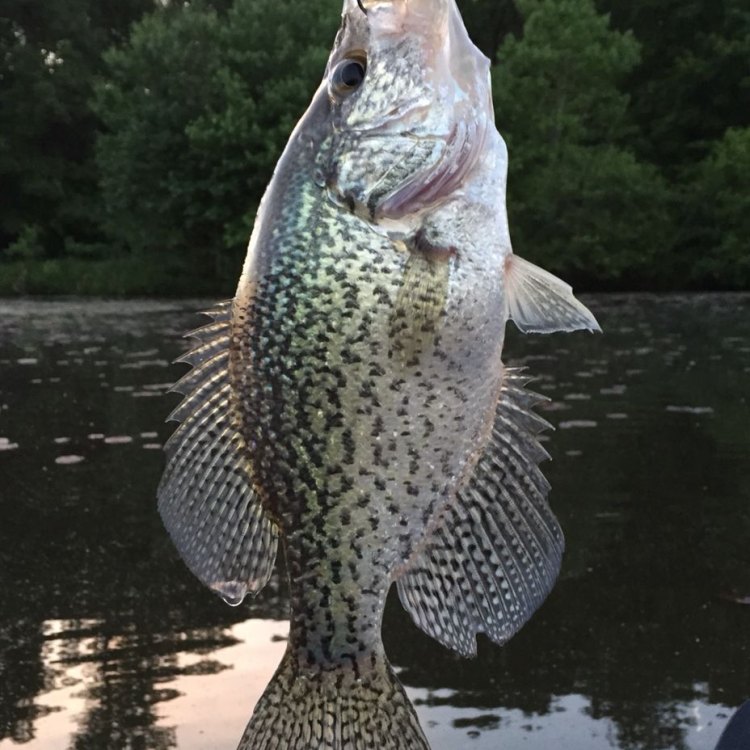
The Mysterious Black Crappie: A Marvel of Freshwater Habitats
Disclaimer: The content provided is for informational purposes only. We cannot guarantee the accuracy of the information on this page 100%. All information provided here may change without prior notice.

